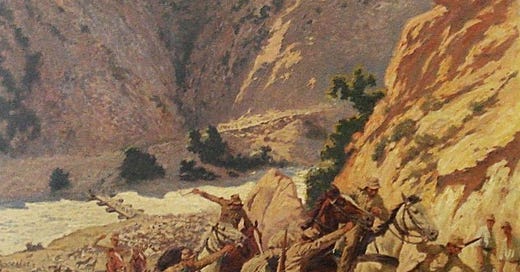The great arms makers of the Edwardian age, firms such as Krupp, Schneider, Skoda, and Vickers, had much in common with the gentlemen’s tailors of the time. While capable of considerable customization, they devoted most of their efforts to the making of suits of standard types. Thus, while each of the quickfiring field pieces used in the First Balkan War (1912-1913) had been wrought by a bespoke armorer, it differed little, whether in form, fit, or function, from its counterparts in other Balkan armies.
The first exception to the general rule of similarity resulted from the use of two different types of recoil mechanisms. All quickfiring field guns made by Krupp were fitted with on-carriage recoil mechanisms that depended upon springs. With the exception of those destined for Bulgaria, quickfiring field guns made by Schneider used hydro-pneumatic devices. (While the latter did a better job of returning the barrel to its firing position, the former required less in the way of maintenance.)
The second source of difference among different field guns resulted from the placement of the sights. Newer pieces used of “independent line of sight,” which allowed the optics to remain in place while the barrel moved back and forth. This feature reduced the amount of time needed to adjust the aim of the piece after the firing of each round.
Sources:
“Field Gun Armaments of European Nations” Engineering 23 October 1908, page 550
Löbell’s Jahresberichte, 1911, page 409






